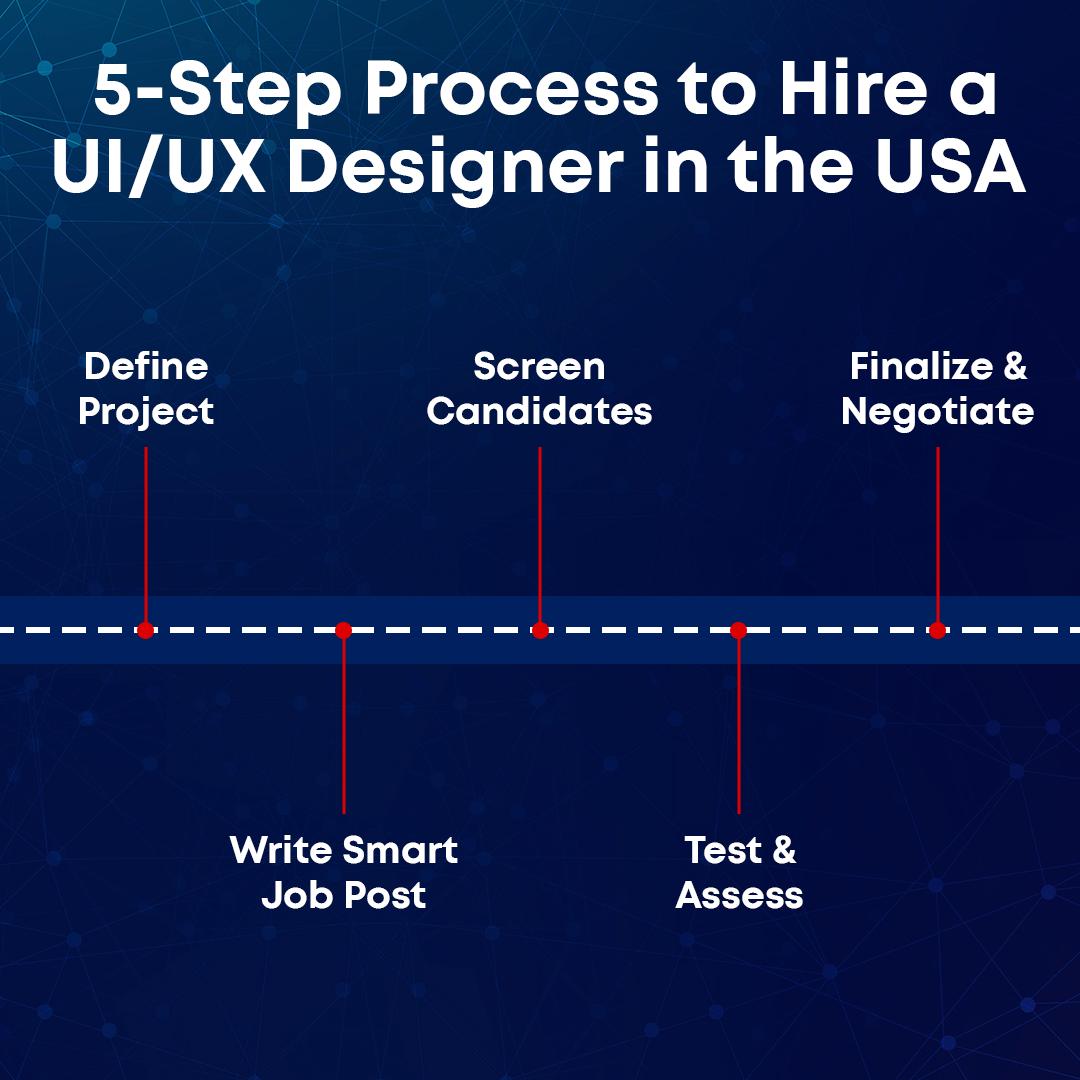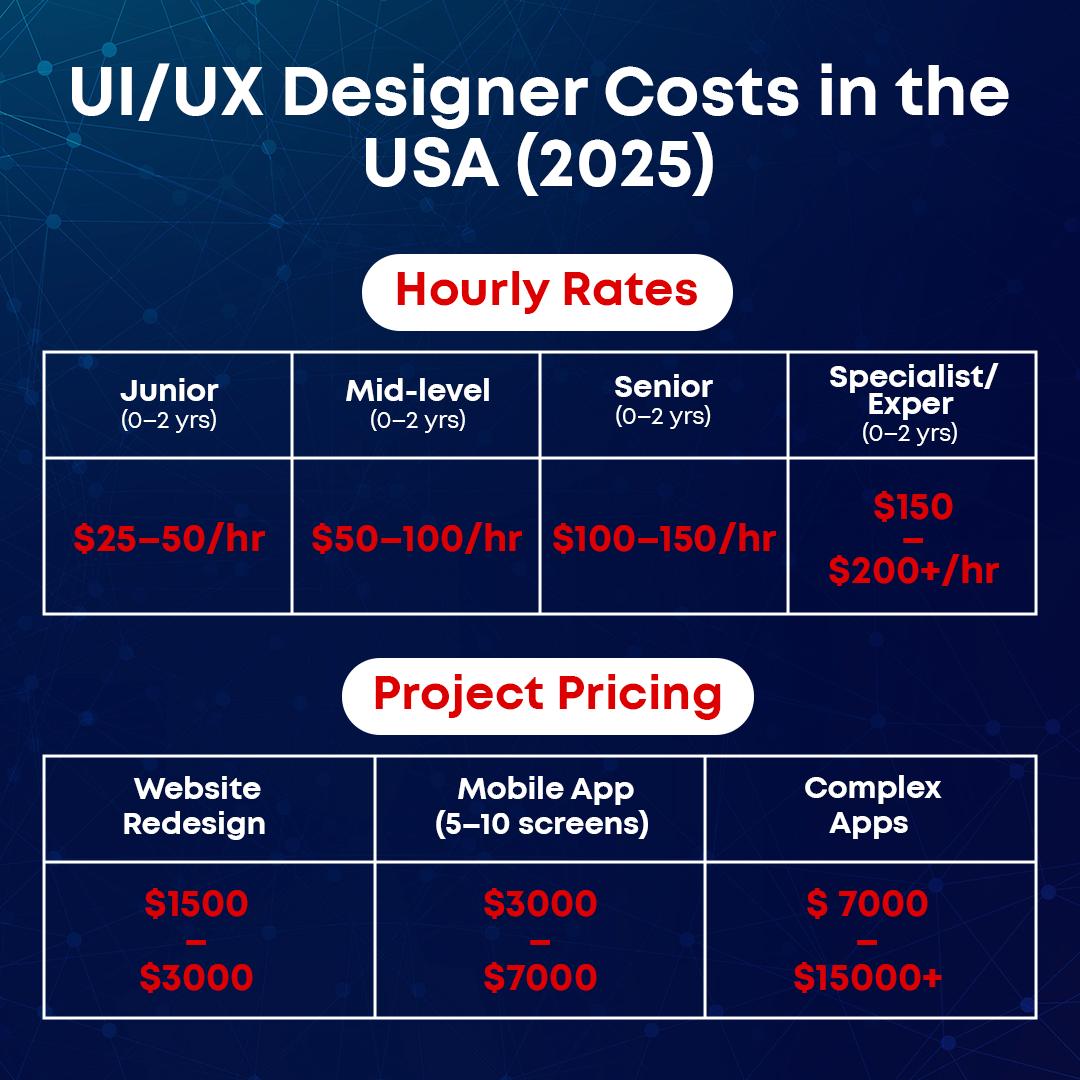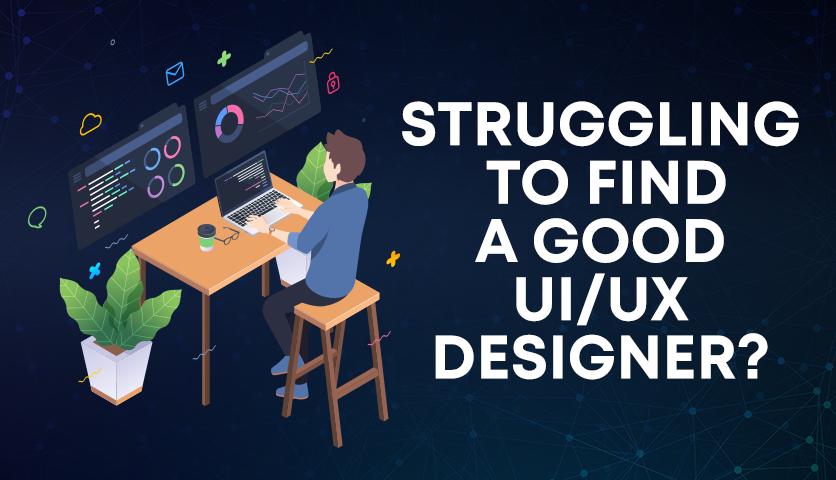Introduction
In today’s digital age, any business’s success depends heavily on its user experience (UX) and interface (UI). The challenge has grown even more significant in 2025.
According to recent reports, approximately 65% of companies in the US are struggling to find qualified and experienced UI/UX designers.
The biggest reason for this is high demand and limited supply. High-quality designers have not only become more expensive, but their availability has also decreased.
Finding the right ui/ux designer can be even more challenging if you’re a startup founder, HR manager, product manager, or business owner.
You’ll learn:
● How to find top talent quickly
● What cost expectations and red flags should you be aware of
● And the proven hiring process that still works in 2025
In short, these strategies guarantee success when you hire a UI/UX designer in the USA.
Why UI/UX Design Matters More in 2025
In 2025, the biggest reality of the digital market is clear – users will no longer accept an average experience. Whether it’s a website, mobile app, or digital product, they will immediately move on to another option if the interface isn’t clear, simple, and attractive.
Business Impact
Research shows that a better UI/UX design can increase conversions by up to 200%, resulting in more customers and higher sales.
On the other hand, companies lose around 38% of their users due to poor design and user experience.
Therefore, in the highly competitive digital environment of 2025, where every brand is fighting to win market share, UI/UX design is no longer an “optional investment” – it’s a core business strategy.
What’s Changed in 2025
● AI-integrated workflows: Designers now work with tools and AI to create faster and more intricate design solutions.
● Mobile-first approach: With more than 80% of users on mobile, going mobile-first has become crucial.
● Accessibility compliance: In the USA, accessibility compliance with ADA guidelines is mandatory, otherwise, legal troubles may arise.
● Voice interface integration: Integration of voice interfaces, including Alexa, Siri, and Google Assistant, has created new opportunities in design.
Difference between UI and UX
● UI Designer: They focus on visual interfaces, brand consistency, and interactions.
● UX Designer: Responsible for user research, wireframes, and complete user journey mapping.
● Full-stack Designer: Handles both roles to create an end-to-end product experience.
If your project is large and complex, a specialist would be preferable.
However, if you’re a start-up with a limited budget, a full-stack designer may be the most cost-effective.
Further Read – Unlocking the Power of CRM Software for Business Growth
Best Sites to Hire UX Designers – Top 7 Platforms
Choosing the right platform is crucial if you’re looking to hire a freelance UI/UX designer in 2025. These are the most effective sites to hire a UI/UX designer in the USA.
1. Toptal – Most Trusted for Business Projects
● Pre-screened meaning the top 3% global talent pool.
● Freelance UI/UX designers for hire in the USA with a pre-vetted and proven track record.
● It costs around $100–200 per hour.
● It’s best for high-budget, complicated projects such as fintech apps and business software.
2. Upwork – Largest Talent Pool
● 50,000+ UI/UX designers are available.
● Built-in project management tools and escrow payment system.
● It costs around $25–150 per hour.
● Upwork is the best for small to mid-sized projects, with different budgets.
3. Dribbble Pro – Portfolio-First Hiring
● It’s allowed to view high-quality creative portfolios.
● You can contact designers directly.
● Costs vary, on average $40–120 per hour.
● It’s ideal for brand-heavy and visual impact like marketing websites and branding promotion.
4. 99designs – Contest-Based Hiring
● You launch a contest and receive multiple design concepts.
● Fixed project pricing and a money-back guarantee.
● Logo/branding projects starting at $300.
● It’s best for branding, logo design, and simple web design.
5. LinkedIn – Business Network
● Custom search filters like skills, location, and experience.
● You can easily connect with a remote UI/UX designer in the USA.
● Its cost depends on the candidate’s experience.
● It’s best for long-term hires, cultural fit, and verified professionals.
6. AngelList – Startup-Focused Hiring
● Experience with startup culture and equity compensation.
● Early-stage product design understanding.
● Junior to mid-level designers cost $30–80 per hour.
● It’s best for resource-constrained startups.
7. Behance – Adobe’s Creative Network
● Adobe tools integration and world-class portfolio showcase.
● Access to global talent.
● Wide range, $25–150 per hour.
Best for: Artistic, experimental, and high-visual creativity projects.
Quick Comparison
● Highest Quality: Toptal, Dribbble Pro
● Best Value: Upwork, LinkedIn
● Fastest Results: 99 designs, Upwork
Long-term Relationships: LinkedIn, AngelList
How to Hire a UX Designer in 2025: 5-Step Process

Let’s take a step-by-step look at what you should do.
Step 1: Understand Your Project Clearly
The first step in hiring a UX designer in 2025 is to have a clear understanding of your project. Ask yourself: Do you need a website redesign or a completely new mobile app?
Identify your target audience. For example, users aged 18–24 may behave differently compared to professionals over 35, so your design approach should reflect these differences. Consider your project timeline and plan accordingly.
Finally, keep your budget realistic – high-quality designers are rarely available at low prices.
Step 2: Don’t Turn Your Job Post into an Advertisement
Many people post generic job listings and then complain about poor candidates. To attract the right UX designer, your job post should be clear and specific:
● Project Details: Specify exactly what you need, e.g., “We want a mobile app prototype in Figma with 5 core screens.”
● Required Skills: Include relevant skills such as usability testing and accessibility compliance.
● Portfolio Expectations: Ask for at least 3–4 case studies demonstrating their work.
● Success Metrics: Define measurable goals like “reduce bounce rate” or “improve conversion by 20%.”
Tip: Make it clear and actionable, e.g., “We need to hire a UI/UX designer in the USA for [specific project].”
Step 3: Screen Candidates Effectively
When reviewing portfolios, don’t just look for “pretty designs.” A strong candidate demonstrates strategy, research, and measurable impact.
Red flags to avoid:
● No case studies; only visually appealing designs.
● Outdated designs (a 2018 style won’t work in 2025).
● Lack of mobile-responsive examples.
What to look for:
● A clearly stated design process, showing the journey from problem to solution.
● Evidence of user research and data-driven design decisions.
● Testing results, e.g., “This change increased conversions by 15%.”
● Demonstrated collaboration with development teams.
Keep screening questions simple:
● “How do you handle research with limited budgets?”
● “What’s your experience with [specific tool]?”
Step 4: Conduct Smart Technical Assessment
● It’s better to take a practical test than to rely on word-of-mouth.
● A minor take-home assignment (2–3 hours).
● Portfolio deep-dive.
● Live design session.
Check references with 2–3 past clients.
Step 5: Make the Right Decision
● The final decision depends on many factors, not just skill.
● Does the candidate understand your business language?
● Is communication clear, or does it need frequent follow-ups?
● Is it a long-term fit or just for a short project?
● Is pricing transparent, or will there be hidden charges?
Negotiation Tips:
● Fix revisions upfront (usually 2–3 rounds are fair).
● Set payment milestones.
● Clear ownership that the final designs will be yours.
● Add a 15–20% buffer time to deadlines.
After this process, you’ll have a designer and the right partner to take your digital product to the next level.
UI/UX Designer Prices in 2025: What to Expect

If you’re considering hiring a freelance UI/UX designer in 2025, it’s vital to understand the price of the right designer.
Junior-level designers:
● With 0–2 years of experience, typically charge between $25 and $50 per hour.
● Suitable for short-term projects or basic UI/UX tasks.
Mid-level designers:
● With 3–5 years of experience.
● Charge around $50–100 per hour.
Senior designers:
● With more than 5 years of experience
● Charge $100–150 per hour.
Specialist or expert designers:
● They specialize in niche UX, accessibility, or AI-integrated workflows.
● Charge upwards of $150–200.
Project-based designer:
● A simple website redesign costs around $1,500 to $3,000.
● Mobile app design involving 5–10 screens can cost $3,000 to $7,000.
● The price range for complex web applications is $7,000 to $15,000 or even higher.
Hiring a remote UI/UX designer also offers a cost advantage. Their rates are 20–30% lower than local hires.
Flexible working arrangements also make timeline management more effortless.
Hidden Costs to Budget For
When planning your UX design budget, don’t forget these potential hidden costs:
Design Software Licenses: $50–$200/month
● Stock Assets & Photography: $200–$1,000
● User Testing Tools: $100–$500/month
● Additional Revision Rounds: $500–$2,000
Factoring these in early helps avoid surprises and ensures your project stays on budget.
Red Flags and Tips. It is essential to remember a few red flags and tips.
It is essential to successfully hire a UX. Avoid designers who offer impossible timelines or guarantees, Only show visual designs, Slow communication, Demand full payment upfront, Don’t provide client references, or only use free tools.
For success, start with small test projects, check 1–2 client references, create a clear contract, and keep a 15–20% timeline buffer. In 2025, ensure knowledge of AI tools, mobile-first design, ADA compliance, and privacy-focused design.
Conclusion
So, the UI/UX’s design quality directly impacts the success of your business. With multiple platforms, hiring designers has advantages, and a well-organized hiring process decreases risk and delivers better and more impactful results. In 2025, the market demands designers who are proficient in both communication and technical tools.


